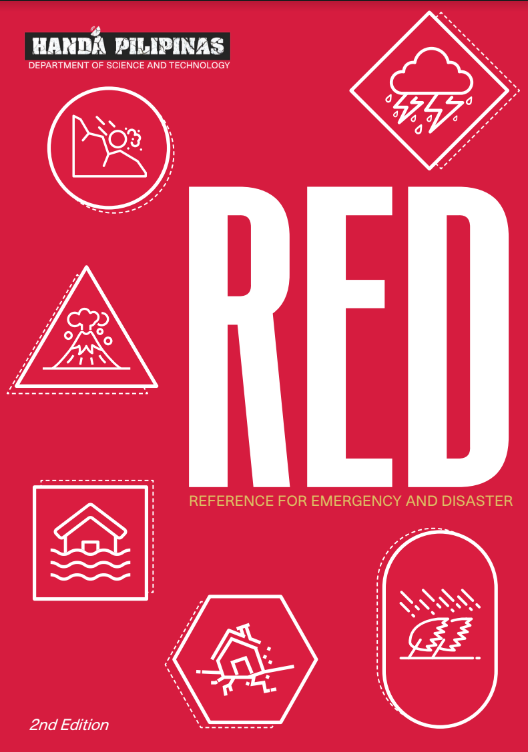During an earthquake, the first thing to do is to duck under a sturdy table.
This is called the drop, cover and hold response to an earthquake, and all countries follow this, according to Dr. Renato U. Solidum, director of the Philippine Institute of Volcanology and Seismology (PHIVOLCS), a service institute of the Department of Science and Technology (DOST).
“You hide underneath a sturdy table, and you hold the table while the floor is shaking, and the table will also be moving,” Solidum stated In his talk “Earthquake Hazards and Risks in Metro Manila and Vicinity: PHIVOLCS-DOST Initiatives” during the 2nd DOST-NCR Stakeholders’ Summit on Disaster Risk Reduction and Management, held last December 5 at the DOST Executive Lounge.
Such response is more effective, said Solidum, compared with the so-called “Triangle of Life” theory of reacting to strong earthquakes. The theory states that instead of ducking for cover under a table, the person should lie beside it. If the ceiling collapses, it will hit the table, lean against it, thus forming a triangle and sparing the life of the person lying beside,
“That (Triangle of Life( is not correct because it assumes a static context of an earthquake. Remember, the table is moving so if you just lie down on the floor, you’re exposing yourself to falling objects that might even get you killed because you don’t have any cover to protect your head and any part of your body,” explained Solidum.
The PHIVOLCS director also mentioned another variation of the Triangle of Life theory which involves the refrigerator. Advocates believe that since the refrigerator is made of metal, it will not be crushed as much as a wooden table would.
Solidum also discounted this theory. “The refrigerator is usually high, hence it can topple down. It may even kill or injure you if you lie beside it. So it’s not appropriate to follow the Triangle of Life,” he reasoned out.
Solidum’s talk at the DOST-NCR Stakeholders’ Summit came a day after parts of Southern Philippines were struck by a 5.7 magnitude quake. Last October 15, a 7.2 killer quake that shook Central Visayas resulted in the death of many and the destruction of structures including historical churches and the world famous Chocolate Hills in Bohol. The deadliest to hit the country in the last 23 years, the temblor was said to have unleashed the strength of 32 Hiroshima bombs.
Solidum disclosed that a tremor of similar magnitude, or even a magnitude of 6.5, from the West Valley Fault can cause severe damage to Metro Manila and nearby places. The West Valley Fault runs from San Mateo, Rizal to Taguig City. A magnitude 8 along the Manila Trench, he said, can cause a tsunami. The Manila Trench is an oceanic trench in the Pacific Ocean, located west of Luzon and Mindoro.
However, he reminded the audience that it is the collapsing building, not the fault shaking, which causes people to die during a powerful tremor, and cited the August 1968 earthquake which pummeled the country. With its epicenter at Casiguran in Quezon, the Intensity 8 temblor significantly affected Manila, causing the six-story Ruby Tower in Binondo to collapse which caused the death of more than 200 persons.
“If the ground is soft, if the buildings are not engineered well, these can collapse and even cause fire,” Solidum said and emphasized the need for preparedness – individually, as well as at home and at the workplace. Buildings should be in accordance with the National Building Code, he stressed.
Written by: Angelica A. de Leon S&T Media Service, DOST-STII
Tuesday, 10 December 2013 13:12


















 21 in 2021 Technology Catalogue
21 in 2021 Technology Catalogue 21 in 2021 Technology Catalogue
21 in 2021 Technology Catalogue DOST Innovations - Web and Mobile Applications for Disaster Risk Reduction and Management
DOST Innovations - Web and Mobile Applications for Disaster Risk Reduction and Management